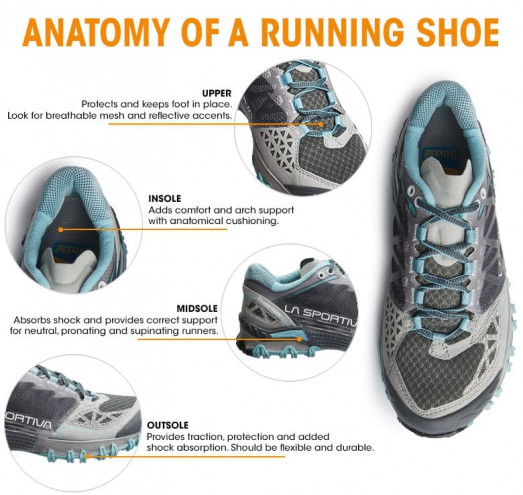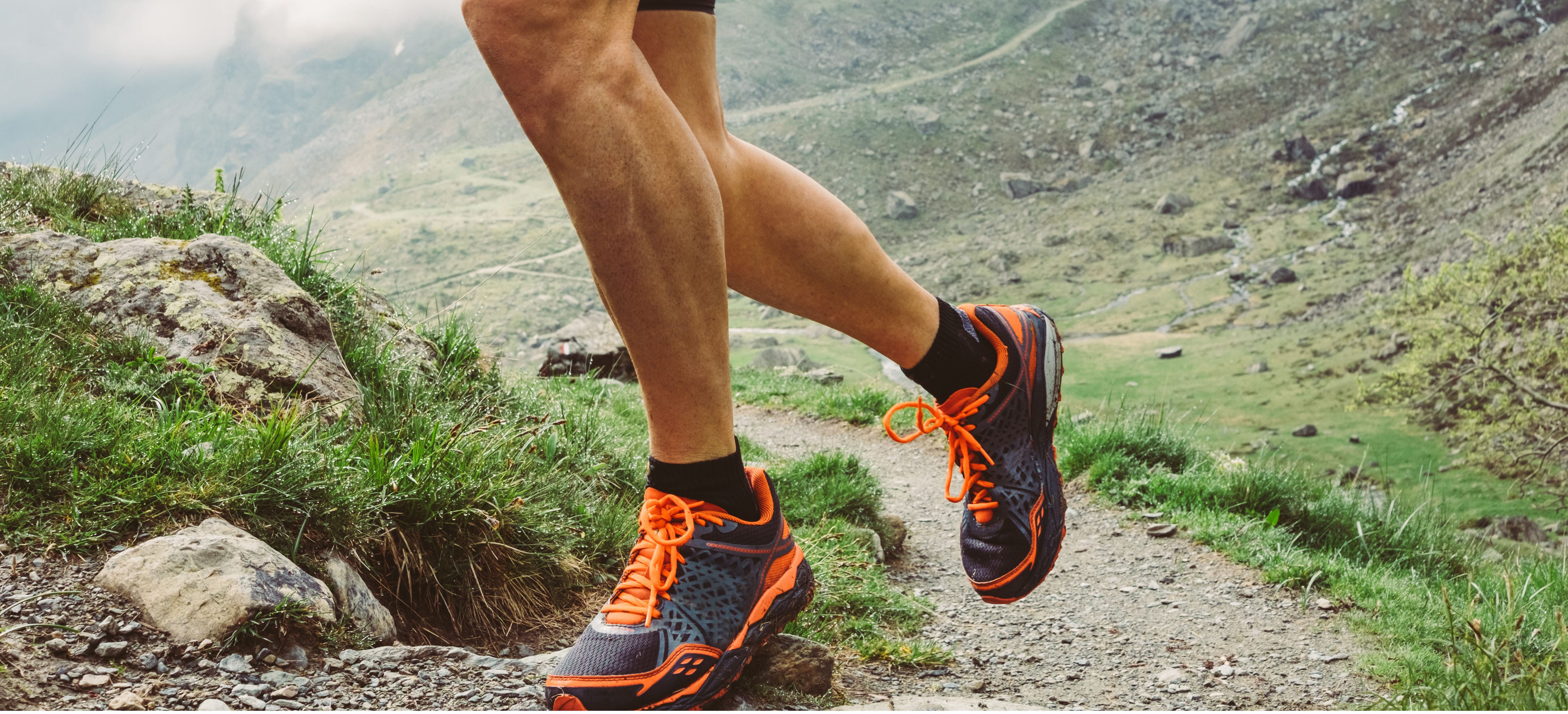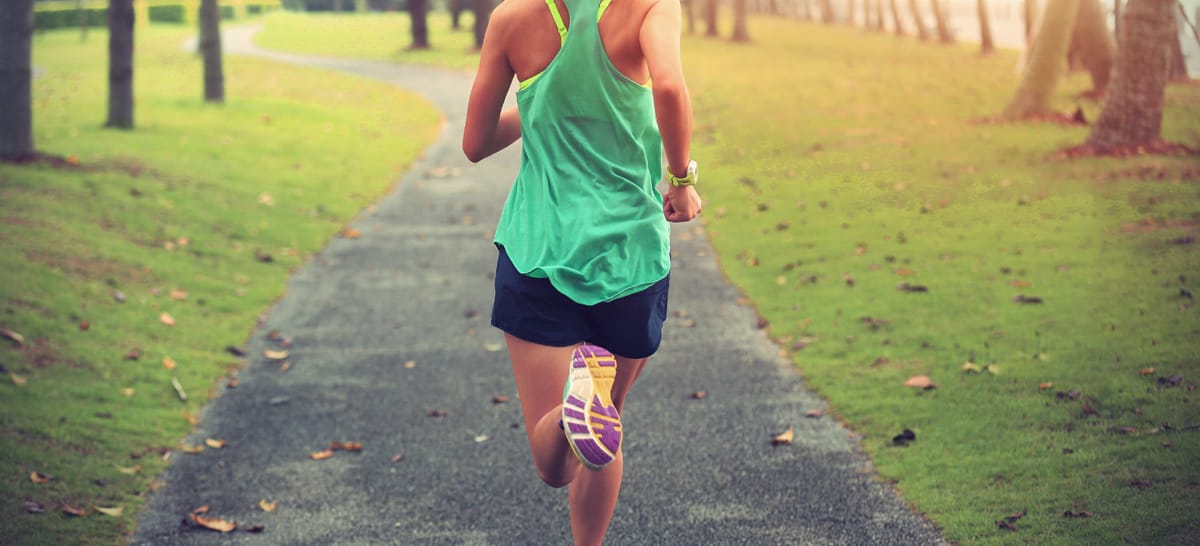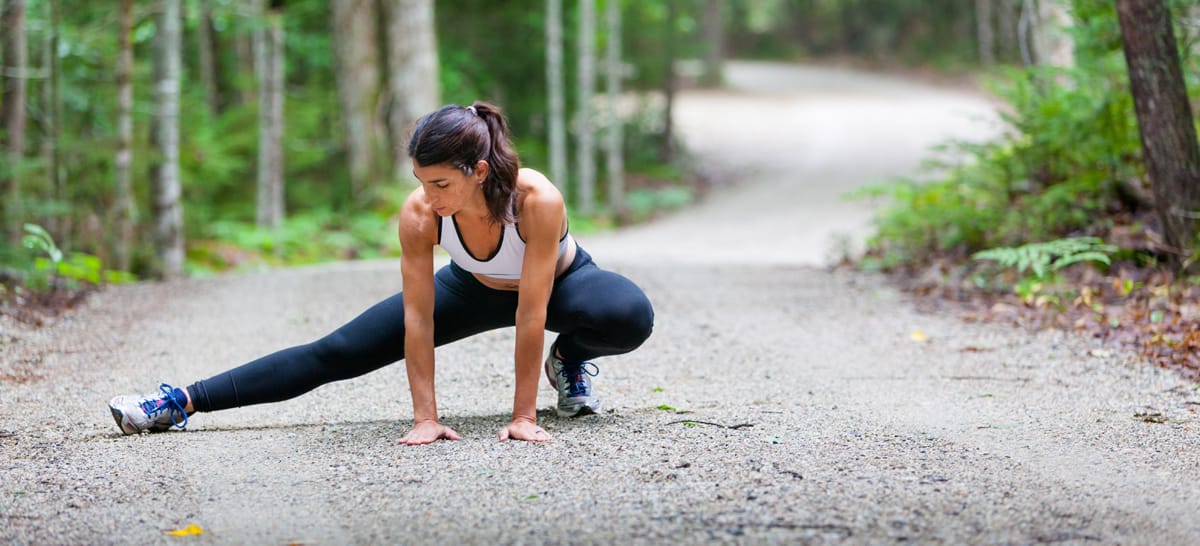Parts of Running Shoes
Understanding how the parts of your running shoes work together to support your foot and smooth your running gait makes choosing the perfect running shoe so much easier. This guide goes through each feature in detail from the upper to the outsole to help you choose the best running shoe for your needs.
Top of Shoe
Upper: The upper is the outside part of the shoe that everyone sees. It's literally the upper part of the shoe, and contains the laces, tongue and collar (I'll explain those later). When choosing a running shoe, look for an upper made with mesh, which will increase the ventilation around your foot. If you're looking at trail-running shoes, you'll want an upper with added durability, like leather or synthetic overlays to reduce wear and protect your feet from trail hazards.
Tongue: The tongue is the center-top part of the upper that moves up and out to allow your foot to slide into the shoe. It is usually cushioned to pad the toe from the laces. Hiking shoes and trail-running shoes often feature gusseted tongues to keep trail debris and moisture out of the shoe.
Eyelets: Eyelets are the holes on the upper where the laces thread through. Eyelets are layered over the tongue. There are a couple different styles of laces -- and even BOA® lacing systems that make tightening your shoes as easy as turning a dial -- so you should choose the one that fits and feels best to you. You can also use laces to your advantage by using different lacing techniques like the ones highlighted in the video below.
Collar: The collar is the part of the upper that surrounds the ankle. Look for a cushioned collar that's lined in mesh for breathable, moisture-wicking performance. If you're looking for a minimalist shoe, these generally don’t come with added cushioning.
Toe Box: The area of the upper that houses your upper foot and toes.
Toe Bumper or Toe Cap: Technically part of the toe box, the toe bumper or toe cap protects toes from impact. Trail-running shoes tend to have beefier toe bumpers than road-running shoes in order to protect feet from trail debris and rocks.
Sides and Middle of Shoe (around foot)
Toe Spring: The toe spring is not often highlighted but featured in almost every pair of running shoes. It's located at the very front of the shoe and arcs upward around the front of the toes to aid forward momentum.
Heel Counter: Below the collar and inside the back of the shoe is the heel counter. It is designed to form to the shape of your heel and hold the shoe in place. Sometimes, the heel counter is placed on the exterior of the shoe for sturdier reinforcement around the heel.
Achilles Notch or Heel Tab: Right above the heel counter is the heel tab, or Achilles notch.
Quarter/Side Panels: Quarter panels, aka side panels, are the parts of the upper on the sides of the foot. Sometimes quarter panels feature reinforcing overlays that add durability, protection and torsional stability.
Bottom of Shoe (below foot)
Insole/Footbed: A removable insert that sits on top of the midsole, the insole (sometimes referred to as a footbed or sockliner) increases fit comfort, and provides anatomically correct cushioning and support. Running shoe insoles often offer great arch support and feature an antimicrobial treatment that fights odor.
Midsole: The midsole, which resides under the insole and above the outsole, is one of the most-important parts of a running shoe. Midsoles not only absorb shock and provide support, but they also often house a variety of specialized technologies like air or gel cushioning. ASICS GEL® Cushioning System, for instance, uses a gel that's ensconced in the midsole to attenuate shock and allow for a smooth transition in the running gait. If you see a running shoe with a "heel crash pad," that will be housed within the midsole, as well.
The midsole is where the proper support for neutral, pronating and overpronating runners will primarily be located. Midsoles tend to be made of EVA (ethyl vinyl acetate) or polyurethane foam, which are both dense, hard foams that absorb shock while maintaining the proper support. Not sure if you have a neutral, pronating or overpronating running gait? Check out our test in the "What is Pronation?" section of our Running Shoes guide to find out. You'll also get loads more of helpful information for buying the perfect running shoes.
Outsole: Located on the bottom of the shoe, the outsole of a running shoe is incredibly important, as well. The most-important function of an outsole is providing traction on the ground. On top of traction, the outsole of a running shoe provides flexibility as well as additional support and shock absorption. If you plan on putting a lot of miles on your shoes, look for an outsole with features that add durability, like carbon rubber or blown rubber. Features that add flexibility, like "flex grooves," can be helpful, as well.
There you have it -- all of the parts of a running shoe explained. Believe it or not, there's even more information you might want to brush up on before investing in a nice, new pair of running shoes. Take a look at our detailed Running Shoes guide or this post on finding the perfect running shoes for even more information. Happy running!




